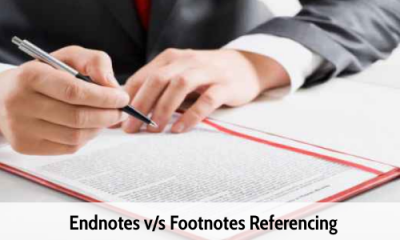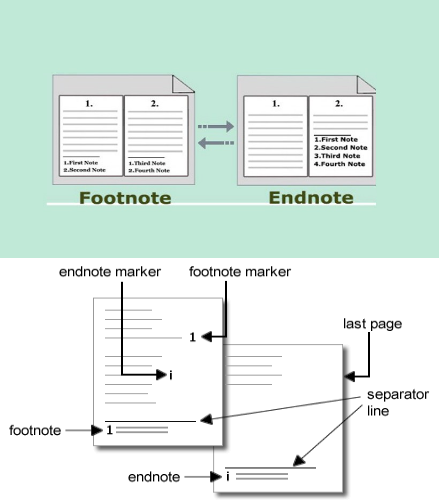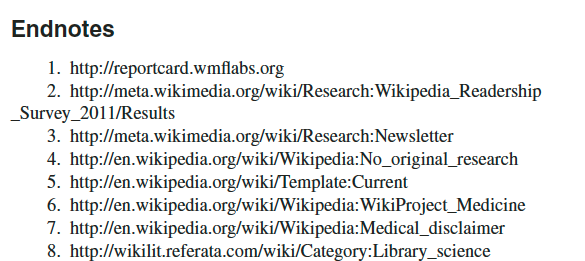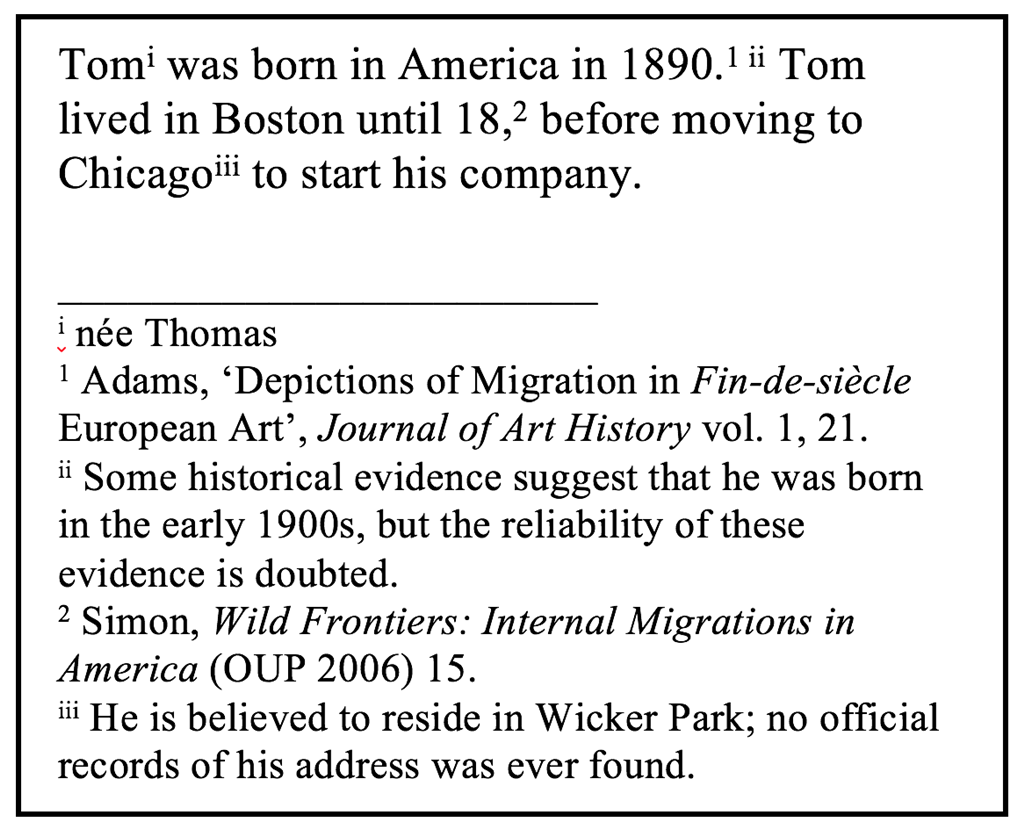
Endnotes v/s Footnotes Referencing
Endnotes or Footnotes? What will you choose? The dilemma of choosing between the two is probably as old as the citation and references one. No matter how profound or qualified writer you are, it is absolutely okay if you get confused while choosing between the two methods of referencing. Endnotes and footnotes both serve the same purpose in different ways. And this becomes the main reason as to why people get confused about choosing the method.
If you are in college, you might be knowing that research assignments and papers require a good number of references. You can even say that students studying at college or university level are the ones being confused about choosing the right method of referencing for their project. This is because while completing their assignments, they need to consider other things as well. While completing their homework, they also need to make sure that they do not miss any important class or lecture. So while writing about their research assignment, they need to make sure that they reference every line and word that is required. Also, at the same time, they need to consider this fact that there are no unnecessary references in their project. While on the other hand, they are told to provide assignments that are appealing to the eyes. So, all of this chaos just adds more to their confusion about choosing the right method.
Why is there a need to use References?
Imagine that you might have some extra information for a project that cannot be included in the document, you are willing to write. And you also need to make sure that all of the important information gets included in it. If not, you might be compromising with the quality of your assignment. This is the situation where footnotes and endnotes balance the play. They provide the students with a space to write when the text cannot be included in the document.
What are Endnotes and Footnotes?
Sometimes, a superscript or an asterisk number appears against a word or sentence in a piece of text, referring to a corresponding note. The notes in a section that appears at the end of the chapter are called endnotes, while notes appearing at the bottom of the page are called footnotes.
If you are still unsure, here’s an example-
In simple words, footnotes are placed at the bottom of a page inside a document. The main purpose of using footnotes is to comment on a designated part of a text or cite references. If a writer feels like adding an extra comment to a sentence, then he can do this by adding a footnote. While doing this, he needs to make sure that the symbol of footnote gets added to the sentence for which the comment is made. Once you are done with this, then you can reprint the symbol again at the bottom of the page and comment gets added accordingly.
Unlike footnotes, endnotes get added to the end of a document. The main purpose of adding an endnote is to cite a particular source or make a small explanation or comment at the end of a research paper. Endnotes are always added in a sequential manner keeping in mind where the reference appears in the document.
Advantages of using endnotes
Less distracting: Endnotes are found to be less distracting as compared to the footnotes because they appear at the end of some document or book and not at the bottom of a page. So, when the reader reads the text, there is no such occurrence of a break.
No confusion about the page: Since, the endnotes appear at the end of a document, they do not create any confusion in the minds of readers about its page or placement.
The reader gets to read all the notes at once: The reader gets a chance to read, comprehend, and even contemplate the notes and references because they appear at the end of the document. The reader is given the opportunity to first finish reading the entire document, and then go through all of its references.
Disadvantages of using endnotes
Confusion while referencing: Since they appear at the end of the document, the author does not number them continuously. This might look simple, but it creates confusion for the readers. When it comes to referencing a huge book or research paper, it becomes difficult to comprehend those endnotes if the author has started for every chapter at the time of numbering.
Continuous flipping of pages: Academic works are usually filled with references, so if the reader wishes to read the endnote references instantly, he will have to flip the pages to the end of the text or document, and a lot of time gets wasted during this process.
Negative impact: In some situations, the endnotes might even have some negative impact on the readers while perceiving your work. Since they appear at the end of the document, they might give the readers an impression that you are trying to hide something in this fine print.
Advantages of using footnotes
It quickens the process: Since the footnotes are available right below the page, the process of comprehending its references is fairly quick. It also becomes quite easy for the readers to read the references present in footnotes. They eliminate the need to flip the pages as compared to the endnotes.
Easy to link: Because of its placement, they allow the readers to link the footnote to the subject of the text immediately.
Automatic process: One of the great advantages of footnote is that it automatically gets added at the bottom of the page.
Disadvantages of using footnotes
Negative impact: Sometimes, footnotes create a negative impact on the minds of readers because of the look it gives to a page, after referencing. Since they appear at the end of the page, it might get unclear for the readers to comprehend them.
Acquire more space: In some situations, footnotes are really long, and thus, they end up acquiring more space on the main text page. Though it’s okay for the writers legally to present such document, but it somehow destroys the visual appeal of the page.
Difficult to manage: If the footnotes are too lengthy, then there is a risk that they end up dominating the page. Thus, it becomes difficult for the author to decide where to place the footnotes on the page.
Similarities between Endnotes and Footnotes
One of the biggest similarities that these two methods hold is that they serve the same purpose for a document. They are used to add information that is already provided in the main body of the document. They either explain some point mentioned in the document or expand upon its material included in the document. The writer should take a note of this fact that both these methods of referencing contain background material, bibliographical information, and other references.
To find footnotes or endnotes in some document, all you need to do is to look for a small number in superscript. This superscript simply indicates the use of endnotes and footnotes. However, when the author needs to add a few endnotes or footnotes, then he can use asterisks or other alphanumeric symbols. Every endnote or footnote in a document begins with the same number to the corresponding part of the text that has been allotted. This is done so that the readers do not face much difficulty while understanding the references.
Difference between Endnotes and Footnotes
One of the biggest differences what these two methods hold against each other is their placement inside a document. They appear either within the text or the document. Endnotes appear at the end of the written word or text, whereas, footnotes as the name suggests, appear at the ‘foot’ of the page. The font used for endnotes and footnotes is smaller than the one used for the main text of the document or book.






